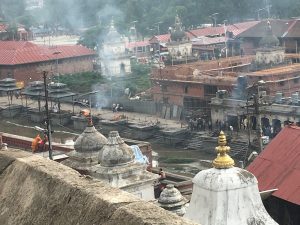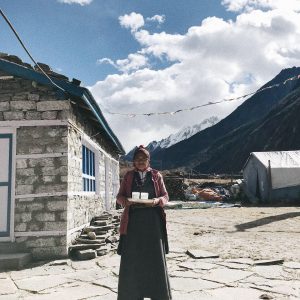Like each country has an economic sector it banks on for a sizable contribution to GDP, Nepal has one too in the form of its tourism industry. Due to the country having an abundance of natural flora and fauna and a slew of marketable outdoor activities like trekking and hiking, there is never a dearth of international tourists. As a result of this, not only is a steady stream of revenue generated but also a massive amount of employment opportunities. Owing to tourism being a labor-intensive industry, the value of human capital has been strongly emphasized as seen in the production of 1.05 million jobs in the country as of 2019 itself.
 Tourism is one of the fastest-growing sectors worldwide. It acts not only as a tool to bring in foreign exchange but more importantly as a medium to understand the richness and diversity of a country and its culture. Thus, to ensure visiting tourists are provided with an experience of a lifetime, governments require the assistance of those well versed in the traditions, philosophies, and practices of the country. This need subsequently translates to a demand for individuals within the country whose way of life is a representation of what the country wishes to present to others. This in turn leads to the creation of a staggering amount of job opportunities. Especially in areas that have scarce employment sources, tourism as an alternative is a godsend.
Tourism is one of the fastest-growing sectors worldwide. It acts not only as a tool to bring in foreign exchange but more importantly as a medium to understand the richness and diversity of a country and its culture. Thus, to ensure visiting tourists are provided with an experience of a lifetime, governments require the assistance of those well versed in the traditions, philosophies, and practices of the country. This need subsequently translates to a demand for individuals within the country whose way of life is a representation of what the country wishes to present to others. This in turn leads to the creation of a staggering amount of job opportunities. Especially in areas that have scarce employment sources, tourism as an alternative is a godsend.
In Nepal, currently, 42% of the local population is involved in the tourism industry, a clear indicator of its influence on their livelihoods. These opportunities have come in the form of increased mandates for Sherpas, tour guides around UNESCO heritage sites, spiritual leaders for tourists seeking meditative retreats, and local business owners for homestays on the trekking routes. These career prospects fall into two categories - direct and indirect job opportunities. Direct employment takes the form of those involved in hotels and motel services, as taxicab drivers, owners of trekking agencies and others who directly interact with tourists. Indirect employment, on the other hand, refers to those who supply food through farming, construction workers of hotels and agencies and those employed in equipment industries.
 In some of the rural parts of Nepal, women are often considered housewives and their occupations restricted to maternal activities and child-rearing. To combat this orthodox mentality, the government of Nepal initiated the Tourism for Rural Poverty Alleviation Program (TRPAP) to provide women and backward communities with training programmes to understand and operate businesses like their male counterparts. Now functional in nearly three districts and 48 village development committees, this program has encouraged women to be self-supportive and offer business solutions for tourism-related purposes. They are trained in trekking, guiding, baking, offering food and beverage services and English Language courses to simulate ease in conversations with tourists. They have also been encouraged to open teahouses and this has greatly benefitted foreign exchange earnings.
In some of the rural parts of Nepal, women are often considered housewives and their occupations restricted to maternal activities and child-rearing. To combat this orthodox mentality, the government of Nepal initiated the Tourism for Rural Poverty Alleviation Program (TRPAP) to provide women and backward communities with training programmes to understand and operate businesses like their male counterparts. Now functional in nearly three districts and 48 village development committees, this program has encouraged women to be self-supportive and offer business solutions for tourism-related purposes. They are trained in trekking, guiding, baking, offering food and beverage services and English Language courses to simulate ease in conversations with tourists. They have also been encouraged to open teahouses and this has greatly benefitted foreign exchange earnings.
Another occupation that has greatly flourished is that of a Sherpa or trekking guide. Sherpas are a group of indigenous pseudo – Tibetans who live in the Khumbu region of Nepal. While assisting visitors navigate tricky terrain is their primary activity, they also perform a host of other duties like setting up camp, managing porters, checking loads and liaising with homestay owners should trekkers require lodging. From a group that struggled with basic amenities, they have now transitioned into a prosperous society. This good fortune has also helped them capitalize on the benefits and open trekking agencies of their own. This has permitted them to consider better education facilities for their wards and schools once unaffordable now lie in their reach.
Tourism’s benefits stretch far and wide and can by no means be summarized easily. However, it must be ensured that all efforts are carried out in a sustainable manner. This is in regard to the environment and the ecosystem. Biodiversity is an important element in nature and an increase in human intervention for tourism purposes should be regulated to ensure this element is protected. The development of one sector must not be compromised or catalyze the downfall of another. If these steps are guaranteed, one cannot deny the positive contributions tourism makes as a whole. It is certainly evident that it is a boon for Nepal, not only as a harbinger of employment opportunities but as a herald of new experiences as well.
